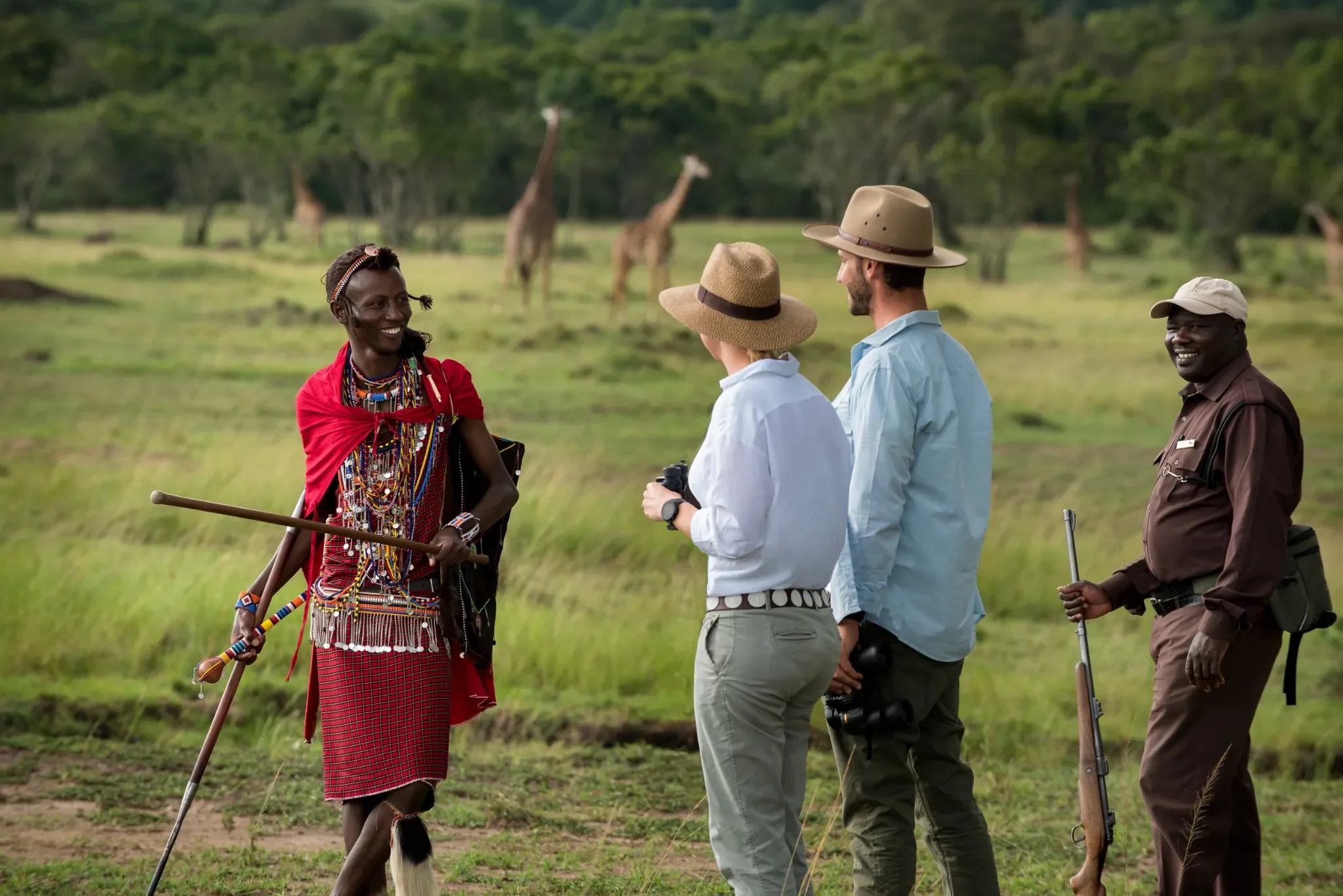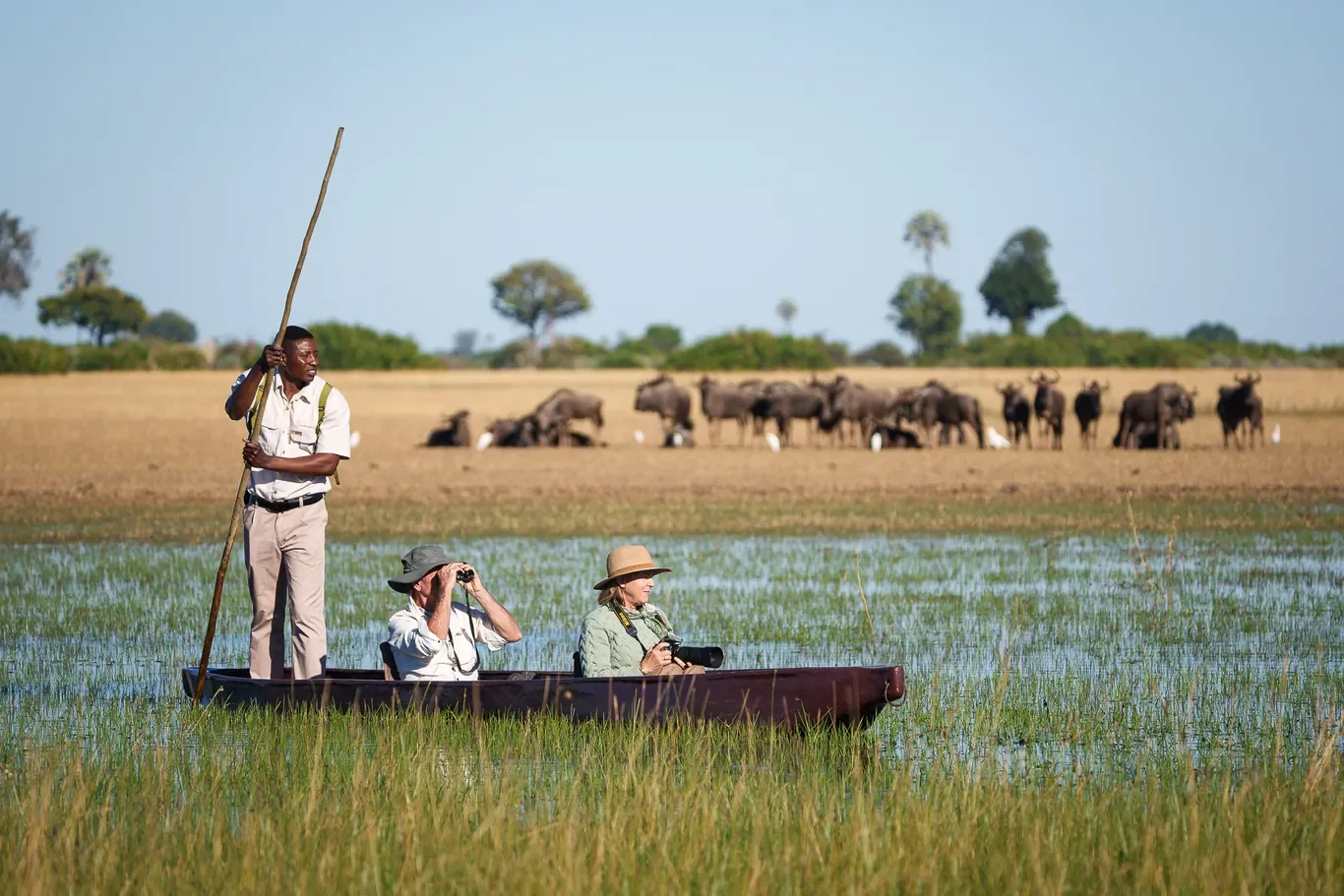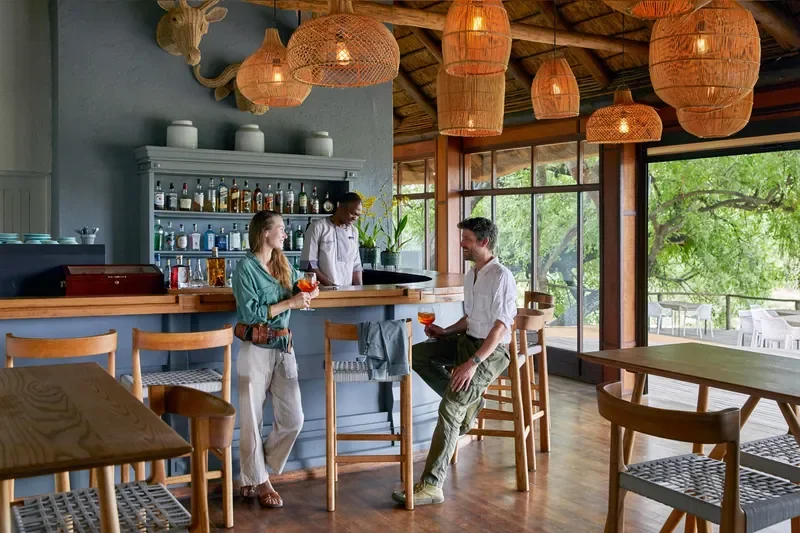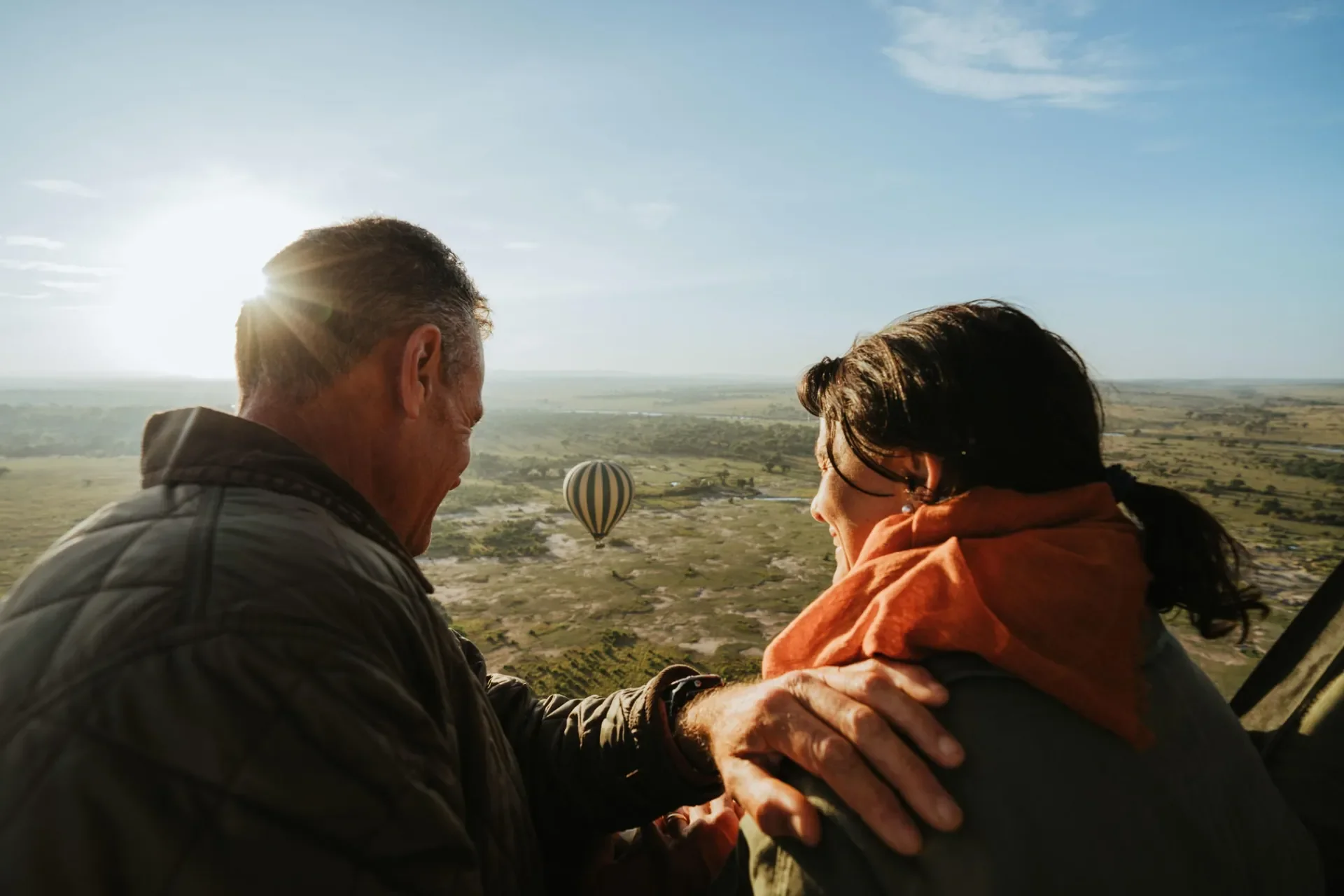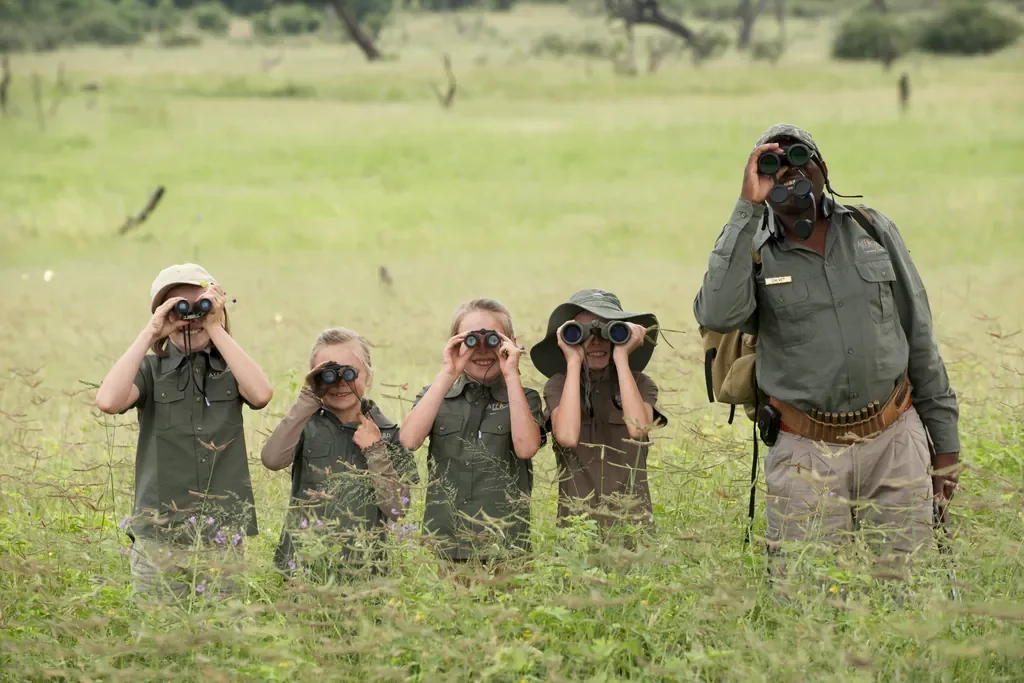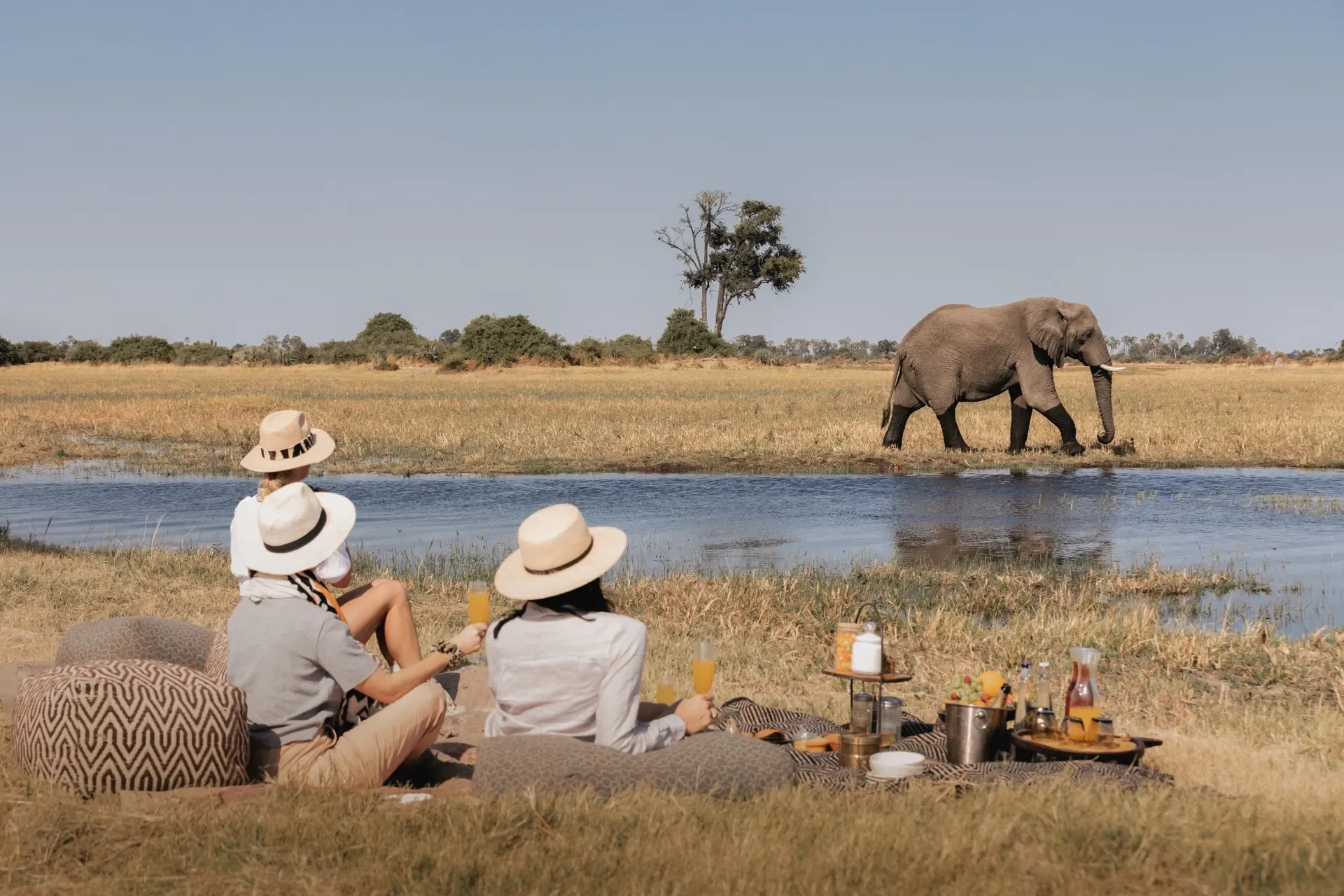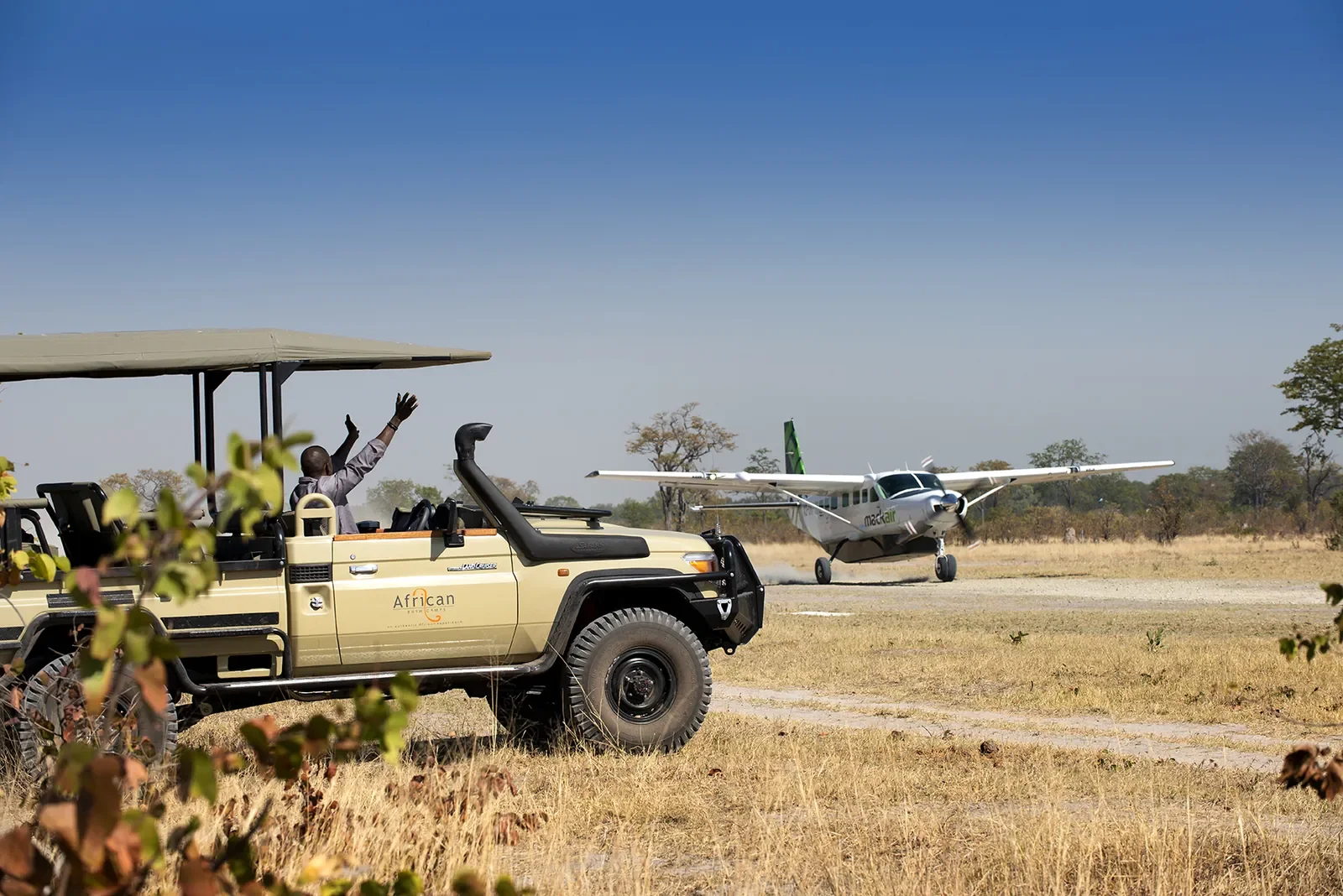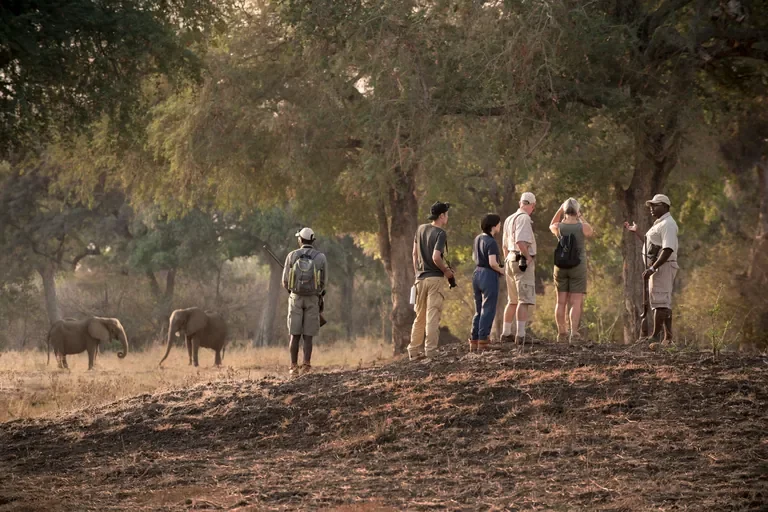What To Pack For Your First Safari
Calm, Ready, Travel-Light
There is a moment on your first morning when the birds start up and the sky lifts from grey to gold. You pull on a warm layer, step into the cool, and the bush feels wide awake. Packing well makes that moment easy. No scramble. No second-guessing. Just you, the light, and a day that is already taking shape.
At NOMARA we plan journeys across the Okavango and Linyanti, the Zambezi, the Serengeti and the Mara, Laikipia, and Namibia’s Kunene. We also travel these regions often ourselves. What follows comes from those miles and mornings, from the gear we’ve tested, and from the small habits that make a big difference. Treat it as practical guidance you can apply right away, then fine-tune to your exact itinerary and season.
Start with a simple system
Think in layers and neutrals, not in single outfits. Dawn can be crisp, midday warm, evening cool again. A few light pieces that stack quickly will carry you from the first drive to dinner without fuss. The happy bonus, most of the luxury camps we choose offer same-day laundry, weather permitting, so you can pack fewer pieces you truly like and rotate them.
Your base system
Breathable base layer, short or long sleeve
Light mid layer, fleece or merino
Packable windproof or light puffer for winter mornings, thin waterproof in the green months
Soft neck buff and a beanie for cold starts
Thin gloves for winter drives on open vehicles
Colours and fabrics that belong in the bush
Earth and natural tones blend with the landscape, hide dust, and help you avoid standing out on game drives, walks, and community visits. Think olive, tan, stone, brown. Avoid bright white, heavy black, strong logos, and high-contrast patterns. In a few woodland areas (for example, parts of Tarangire or Ruaha) solid black and royal blue can attract tsetse flies, so stick with neutrals there.
Pick quick-dry travel fabrics and cotton blends that feel good against skin. Linen is lovely for camp and evenings, less so for surprise showers. Zip-off trousers and roll-tab sleeves make adjustments easy as temperatures swing through the day.
What to wear, season by season
Southern Africa winter, roughly May to August
Crisp at dawn and after dark, warm by lunchtime. You will start bundled up, then peel down to a T-shirt late morning. A light puffer or windproof, beanie, buff, and thin gloves are worth their space.
Southern Africa summer, roughly September to April
Warm to hot. Expect afternoon showers in some regions, dramatic clouds, and green grass. A thin waterproof or light shell helps, and breathable, quick-dry layers keep you comfortable.
East Africa most of the year
Stable temperatures with short rains around November and long rains around March to May. Pack a light layer for dawn, breathable shirts for midday, and a thin waterproof if you travel in the rains.
Headwear and footwear that earn their place
Hats
A wide-brim hat with a chin strap is a keeper. Open vehicles catch the wind, and the strap saves you from watching your hat roll down a termite mound. A soft cap makes a good backup. Add a beanie for cold mornings and balloon launches.
Shoes
Closed-toe walking shoes or light hikers with decent tread work for drives and short guided walks. Wear them in before you fly. Pack sandals for camp, pool time, or beach add-ons. Two or three pairs of good socks, merino if you have them, keep feet happy.
Camera gear, without the kitchen sink
You don’t need a suitcase of lenses to make strong images. You do need a simple plan.
Bodies and lenses
A mirrorless or DSLR with a mid-range telephoto is a workhorse. Many guests like a 70–200 mm for portraits and a 100–400 mm (or similar) for reach. Phone shooters do well too with a small grip for stability.
Support and dust care
A small beanbag or a rolled jacket steadies your lens on the vehicle rail. Pack a rocket blower, microfiber cloth, and a tiny brush. A lightweight dry bag or zip pouch protects cameras in dusty or showery moments.
Power and storage
Two batteries per body, a fast charger, and memory to spare. Some vehicles have charging points, but assume you’ll top up in your room. If you edit, bring a card reader and a small SSD.
Drones
Most parks and conservancies ban the use of drones. We suggest leaving all drones at home.
The small items that make a big difference
Universal plug adaptor and a compact multi-USB charger
Slim power bank for long days
A small headlamp or micro torch for hands-free light in your room
Quality sunglasses with proper UV protection
Good binoculars, 8×32 or 10×42 are sweet spots
If you wear contacts, bring glasses too for dusty days
Sunscreen and SPF lip balm
Insect repellent, spray or lotion with DEET or icaridin; modern wrist bands are a helpful add-on for wrists and ankles
A light daypack for water, layers, camera, and sunscreen on full days out
A tiny first-aid pouch for scrapes, plus prescription meds you rely on
For walking, add a packable jacket and spare socks
Packing for children
Kids love safari when they feel part of it. Pack lightweight layers they already enjoy wearing, a sun hat with a strap, breathable long sleeves, and comfy closed shoes. Add a tiny headlamp, a small notebook, and child-sized binoculars so they can join the spotting. Quiet midday activities help, like cards or pencils.
Drive durations and mealtimes can usually be adjusted by the lodge guiding team within park rules. Share your family’s rhythm when booking and the team on the ground will shape days that feel natural for you.
Clothing for specific experiences
Game drives
Layers, hat, sunglasses, closed shoes. Long sleeves for sun. A buff helps on windy, dusty days.
Guided bush walks
Neutral long trousers, long sleeves, sturdy closed shoes, hat. Bring as little as possible. Your guide will brief spacing, wind, and pace.
Boating, canoeing, mokoro
Quick-dry shorts or trousers, light shirt, hat with strap, a thin layer for the breeze. Polarized sunglasses help you read water.
Ballooning
Warm layers at dawn, beanie or hat, closed shoes. After landing, enjoy a bush breakfast before returning to camp.
Sleepouts and star beds
Warm night layers even in summer. Socks and a light fleece make the difference as the air cools.
Culture with care
Comfortable, modest clothing. Cover shoulders and knees where requested. Your guide leads etiquette, you enjoy the time.
Coastal add-ons
Simple beachwear and a long-sleeve rash guard for sun. If you love snorkeling, your own mask guarantees a good seal.
Bags, dimensions, and bush flights
Light aircraft keep you close to wild places, and they limit what you can bring. Most bush flights require soft-sided luggage and set modest weight limits. Wheels and rigid frames are often restricted. Pilots need accurate weights to load safely, so weigh your bag before you leave home.
Typical allowances and size guidance
Weight: often 33–44 lb per person (15–20 kg), depending on route and operator
Main duffel dimensions: commonly around 24 × 12 × 10 in or smaller (61 × 30 × 25 cm), with soft sides so it can flex in the hold
Linear size reference: up to about 62 in total (158 cm) on some routes
NOMARA will always provide allowance guidance for your route based on the respective charter flight partner’s rules.
What works best
A soft cotton-canvas duffel that is water-resistant, with strong zips and easy lift points. Use packing cubes so clothing does not collapse into a nest, and a small dry bag for passports and electronics during rainy transfers.
Your NOMARA duffel
Every booking includes a NOMARA Safari Duffel, designed and manufactured in South Africa. It is a highly durable cotton-canvas soft bag built for bush flights. If you would like extras for family or friends, additional bags can be purchased.
For day-to-day, a small soft-sided daypack or camera sling is ideal. It should hold your layers, water, sunscreen, and camera without becoming a chore.
Tech and charging
A little planning keeps nights magical. Pack a multi-port wall charger, one adaptor per person, a compact power bank, and short cable ties or velcro to keep cords tidy so nothing gets left under a canvas chair. Expect charging to be available in rooms or main areas. Expect “bush Wi-Fi” to be enough for messages and email, not heavy uploads.
A few smart habits
Pack once, then remove one outfit. Laundry at most of our selected camps has you covered.
Wear your heaviest shoes on flights.
Clip your hat to your bag with a carabiner.
Sunscreen on your hands and ears, not just your face.
Keep a soft cloth in your pocket for camera glass and sunglasses.
Ask your guide about tomorrow’s plan each evening, then lay out what you need. Mornings become effortless.
How this looks on a real day
Picture an early start in the Linyanti or the Lower Zambezi. You zip a base layer under a fleece, add a windproof, tuck thin gloves in a pocket, and walk to the vehicle with your daypack and camera. The first hour is crisp and quiet. Coffee tastes better than it should. By mid-morning the jacket is off, hat on, and you settle into an unhurried sighting as elephants turn a waterhole into a theatre. Lunch back in camp is light and easy. Sandals replace shoes. A book and binoculars on your veranda carry you toward the afternoon. Later, you change into long trousers for a gentle walk, add a hat and lip balm to the daypack, and follow your guide through warm grass where cicadas buzz. Dinner is smart casual on a deck under the stars. A warm layer waits on your chair. Everything you packed makes sense. Nothing feels like work.
A one-week outline you can tweak
3 to 4 long-sleeve shirts with roll tabs
2 pairs long trousers, 1 pair shorts
1 light fleece or merino, 1 windproof or light puffer for cool months
1 thin waterproof in green season
1 buff, 1 beanie, thin gloves for winter mornings
1 wide-brim hat with strap, 1 cap as backup
1 pair closed walking shoes, 1 pair sandals
Underwear and socks you like, include two or three good hiking socks
Sunglasses, sunscreen, SPF lip balm
Insect repellent, plus optional wrist bands
Small headlamp or micro torch, adaptor, multi-USB charger, power bank
Camera or phone kit, spare cards, battery, small beanbag, cloth
Binoculars you will actually use
Daypack, packing cubes, small dry bag
Personal medications and a tiny first-aid pouch
A simple outfit you enjoy wearing to dinner
Quick FAQs
-
Use what you own if it suits the climate and colours. Earth-toned neutrals blend in, hide dust, and do not shout in the vehicle. In a few tsetse areas, avoid solid black and royal blue.
-
They matter. Most routes ask for soft bags and set limits around 33–44 lb per person (15–20 kg). Wheels and rigid frames are commonly restricted. A soft cotton-canvas duffel is ideal. We can confirm your route’s exact allowance when you book.
-
Dawn and evenings can be cold, days are usually warm. A light puffer or windproof, a fleece or merino, a beanie, and thin gloves make mornings comfortable. You will be in a T-shirt by lunch.
-
A spray or lotion with DEET or icaridin works well. Wrist bands are a useful extra for wrists and ankles if you like layered protection. Your guide will also help you avoid problem times and places.
-
No. Many guests shoot beautifully on phones. If you enjoy photography, a mid-range telephoto helps with distant subjects. Use a dust or waterproof cover, a small beanbag, and pack spare batteries and cards.
-
In most cases yes. Lodge guiding teams can tailor drive durations and mealtimes to your preferences within park rules. Share what works for you when booking, and they will align on the ground.


